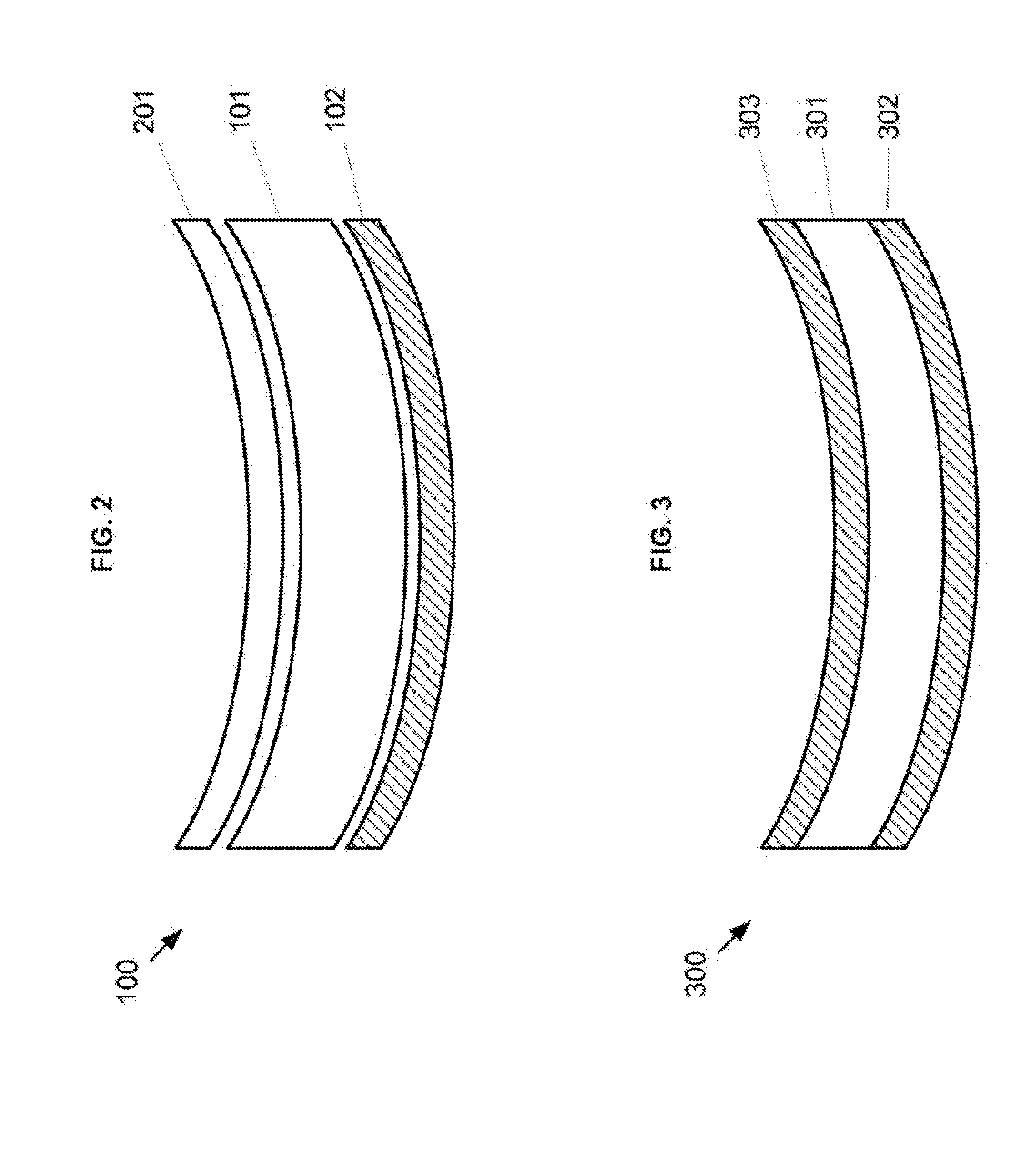High performance selective light wavelength filtering providing improved contrast sensitivity
a selective light wavelength filtering and high-performance technology, applied in the field of ophthalmic systems, can solve the problems of blue light hazard, optical degradation of the lens or cataract, and exposure to the short wavelengths that pose the greatest danger, and achieve the effect of improving contrast sensitivity
- Summary
- Abstract
- Description
- Claims
- Application Information
AI Technical Summary
Benefits of technology
Problems solved by technology
Method used
Image
Examples
example 1
[0192]A polycarbonate lens having an integral film with varying concentrations of blue-blocking dye was fabricated and the transmission spectrum of each lens was measured as shown in FIG. 45. Perylene concentrations of 35, 15, 7.6, and 3.8 ppm (weight basis) at a lens thickness of 2.2 mm were used. Various metrics calculated for each lens are shown in Table IV, with references corresponding to the reference numerals in FIG. 45. Since the selective absorbance of light depends primarily on the product of the dye concentration and coating thickness according to Beer's law, it is believed that comparable results are achievable using a hard coat and / or primer coat in conjunction with or instead of a film.
TABLE IVPhotopicScotopicPhoto-CircadianRatioRatiotoxicityRatioVλV′λRatio (Bλ)(M′λ)Ref.(%)(%)(%)(%)Unfiltered100100100100Polycarbonate-451087.5%87.1%74.2%85.5%undyed3.8 ppm (2.2 mm)452088.6%86.9%71.0%78.8%7.6 ppm (2.2 mm)453087.0%84.1%65.9%71.1%15 ppm (2.2 mm)454088.3%83.8%63.3%63.5%35 pp...
example 2
[0197]Nine patients were tested for contrast sensitivity using dye concentrations of 1× and 2× against a clear filter as a control. 7 of the 9 patients showed overall improved contrast sensitivity according to the Functional Acuity Contrast Test (FACT). See Table VI.
[0198]Table VI is a contrast sensitivity test for dye samples with loadings of X and 2X. Test was done in February 2007 at Vision Associates in Havre de Grace, Md. by Dr. Andy Ishak. The test consisted of 10 patients, each tested with two filters, using the FACT contrast sensitivity testing process, with the following constraints. Seven of the 9 patients showed overall improved contrast sensitivity results (columns 33-35). Patients overall showed improvement in both eyes on 18 of the 20 opportunities (2 eyes×two filters×five FACT columns (rows 27-28). On average, patients improved by 2.3-3.4 for all 20 opportunities (row 25).
[0199]Having now fully set forth the preferred embodiment and certain modifications of the concep...
PUM
 Login to View More
Login to View More Abstract
Description
Claims
Application Information
 Login to View More
Login to View More - R&D
- Intellectual Property
- Life Sciences
- Materials
- Tech Scout
- Unparalleled Data Quality
- Higher Quality Content
- 60% Fewer Hallucinations
Browse by: Latest US Patents, China's latest patents, Technical Efficacy Thesaurus, Application Domain, Technology Topic, Popular Technical Reports.
© 2025 PatSnap. All rights reserved.Legal|Privacy policy|Modern Slavery Act Transparency Statement|Sitemap|About US| Contact US: help@patsnap.com



